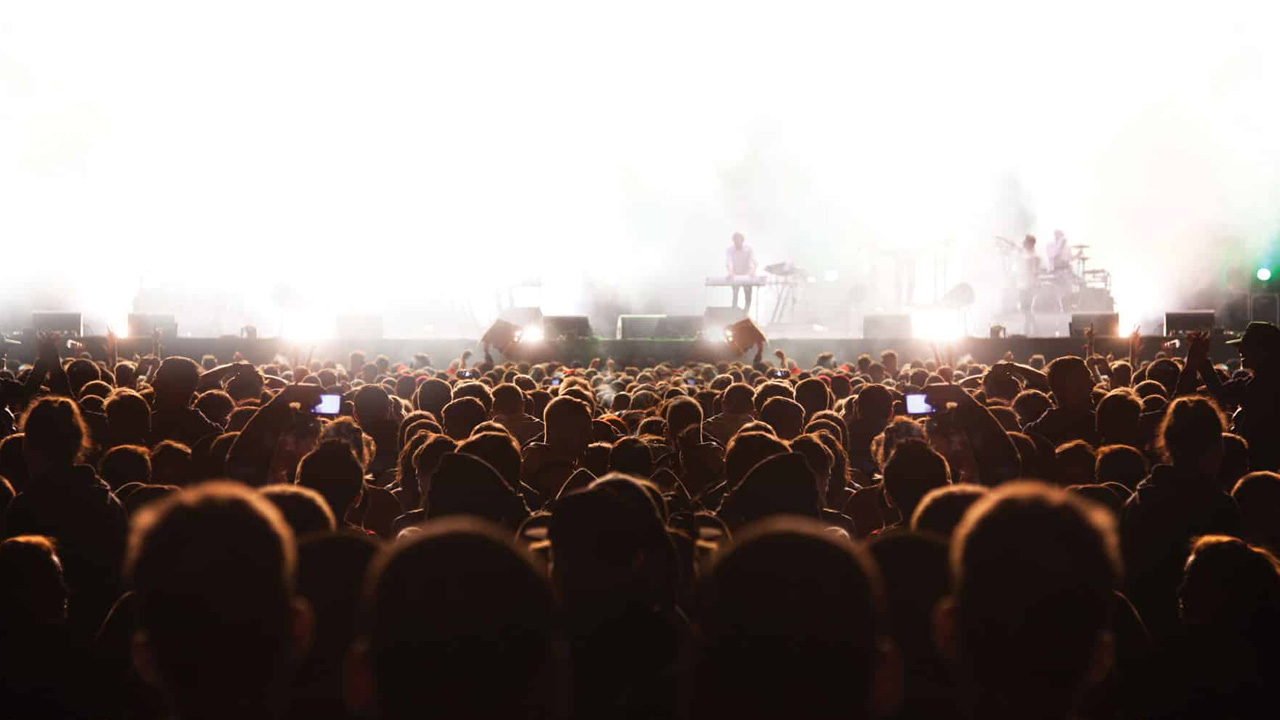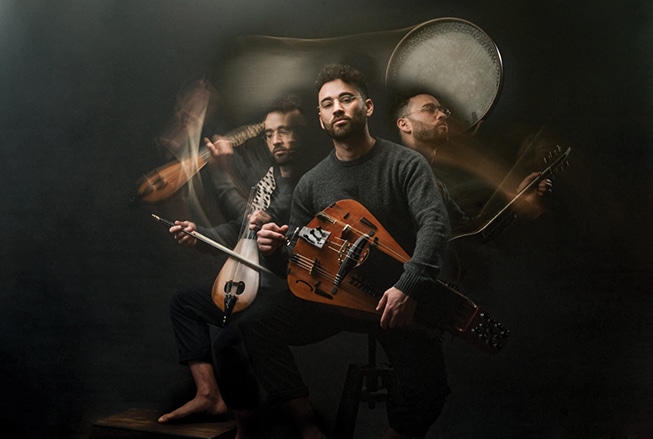A History of Messianic Jewish Music

Singing and dancing are a central part of Jewish culture and religious life, and how much more exciting for those who can rejoice in their relationship with the Messiah! Music as joyful worship is an essential part of biblical life. Psalm 95:1 encourages us to sing before the Lord: “O come, let us sing for joy to the Lord, let us shout joyfully to the rock of our salvation.” Songs in the Bible express a variety of emotions, including gratitude (1 Samuel 2:1–10; Luke 1:46–55), adoration (Revelation 4:8), exultation (Exodus 15:1–21), and also mourning: “Therefore my harp is turned to mourning, and my flute to the sound of those who weep” (Job 30:31).
The Birth of Modern Messianic Jewish Music

Messianic Jewish music draws inspiration from the vast tradition of scriptural songs and liturgical expression. Messianic music employs the sounds of the Jewish Diaspora and the rhythms of Israel. Today in the Messianic Jewish world, countless artists have emerged, and more are coming.
Modern Messianic Jewish music originates in the Jesus movement of the late 1960s and early 70s. In 1972, a group of young Jewish hippies who came to faith in Messiah formed a singing group, the Liberated Wailing Wall. Stuart Dauermann, a Messianic rabbi and musician, wrote much of the group’s repertoire in a “Jewish gospel” style. This musical group toured all fifty states and six continents and engaged 150 members during its thirty-eight-year history.

Later, in 1979, the Messianic group Kol Simcha recorded its first vinyl, The Sound of Joy. Based out of Philadelphia, this group also toured extensively in the United States and played at several music festivals in the former Soviet Union. The Liberated Wailing Wall and Kol Simcha weaved eastern European niggunim (wordless melodies) and choral arrangements into their songs, and, of course, lots of tambourines and dancing. As Messianic Jewish congregations grew in the 1970s and 80s, new Jewish believers began incorporating this music into their Sabbath worship services.
Joel Chernoff, one of the pioneers of Messianic Jewish music, formed the group Lamb in 1972 with Rick “Levi” Coghill, a studio guitarist. Lamb wrote and played folk-rock Messianic songs for twenty years. The band produced fourteen albums, some of which made it to the top ten of the contemporary religious charts. Some of Lamb’s most notable hits are: “The Sacrifice Lamb,” “Clap Your Hands,” and “I Will Talk to My Brothers.” Chernoff went on to release two solo albums after the group dispersed.
The Next Generation

In the 1980s, other singing groups formed, including Israel’s Hope with Paul Wilbur, Marc Chopinsky, and Rene Bloch, an acoustic trio with musical excellence. Although the band only recorded two albums, they composed several songs Messianic believers still sing today, like “Come Let Us Go Up” and “He Shall Reign.”
Paul Wilbur went on to develop his own projects, including the 1996 release of Shalom Jerusalem. A live recording of a concert in the Holy City, this album revolutionized how the Jewish and Gentile world looked at Messianic Jewish music. This album includes classics like “Roni, Roni, Bat Zion” (“Rejoice, Rejoice, Daughter of Zion”), “Baruch Haba” (“Blessed Is He Who Comes”), and “Mah Tovu” (“How Good”). At this concert, musicians sang in Hebrew and English and used various instruments, while Messianic Jewish pioneer David Loden conducted a choir. From there, Wilbur recorded two other live concerts, “Lion of Judah” and “Jerusalem Arise.” His work is integral to worship in many congregations today.

Another notable Messianic Jewish musician is Marty Goetz. He has been recording music since 1985, including his beautiful album The Love of God, which combines the sounds of Broadway with contemporary worship music. He currently leads “House of Worship,” a time of weekly praise music live on social media. His daughter, Misha, is also a worship leader and recording artist.
As you can see, Messianic Jewish music offers a vast array of musical styles. Each of these artists’ sounds varies greatly, yet all compose songs based on inspiration from biblical narratives and themes.
Growth of Messianic Jewish Music in Israel
With the Israeli release of an album called Praise to Our God, 2004 was a crucial year for Messianic Jewish music. The Messianic Jewish Alliance of Israel sponsored this live recording of a concert, and Jamie Hilsden produced all the music. Israeli believers from across the Jewish nation submitted songs to compile a songbook, and this album was the fruit of their endeavor. This album ushered in a new generation of Messianic artists, like Sarah Liberman, Keren Silver, Yaron Cherniak, and, most recently, Emanuel Roro. Five more concerts have occurred because of the success of the first one.
Hilsden also formed his own music group, MIQEDEM, with other Jewish believers from Israel. While at Messiah Conference, one of the largest Messianic gatherings in the United States, Hilsden would lead and collaborate annually with a group called “The Band from the Land.” In 2015, he asked some of the members if they wanted to become an official group—and sure enough, they formed MIQEDEM! They released their first album in 2016 and then released two more.
The Hebrew word miqedem means “from the east” or “from eternity.” This music group’s songs blend contemporary Eastern sounds with words from the Hebrew Scriptures. One of the members of MIQEDEM, Shai Sol, released her solo album and is also working on new musical endeavors.
Another artist of note in Israel is Shilo Ben Hod. He put together a group called SOLU, who have a “vision to prepare the way for revival and Yeshua’s return.” This band features young Israelis and releases live YouTube worship sessions. Ben Hod has two albums of his own featuring members of the group. They have toured the United States twice and have more music coming out soon!
One of the most popular Messianic artists in Israel is Joshua Aaron. After releasing “Gadol Elohai” (“How Great is Our God” in Hebrew), he acquired millions of hits on his YouTube channel. Now, he owns a music house in the Galilee region of Israel and records a plethora of music. Notably, he recorded two live albums, one at the Tower of David and the other at the Garden Tomb. Joshua Aaron most recently collaborated with Aaron Shust, a Christian artist. Shust released a groundbreaking song called “Zion,” which quotes extensive amounts of Scripture. During the song, he even sings the Shema (Deuteronomy 6:4), a traditional Jewish prayer, in Hebrew.
Messianic Jewish music will continue to grow and flourish as it is based on an ancient biblical foundation of song, combined with much innovation. There will be more to come and new talent to discover. Of course, much has changed since the music from the 1970s. Yet, each musical contribution is valued and necessary and plays a part in the history of Messianic Jewish worship. May we continue to honor this legacy and look forward to what God has in the near and distant future.






Sign up to receive our email newsletters
Get the latest news from Israel, insights from Dr. Mitch Glaser, international ministry reports, as well as videos and podcasts, downloadable resources, discounts in our online store, and much more!